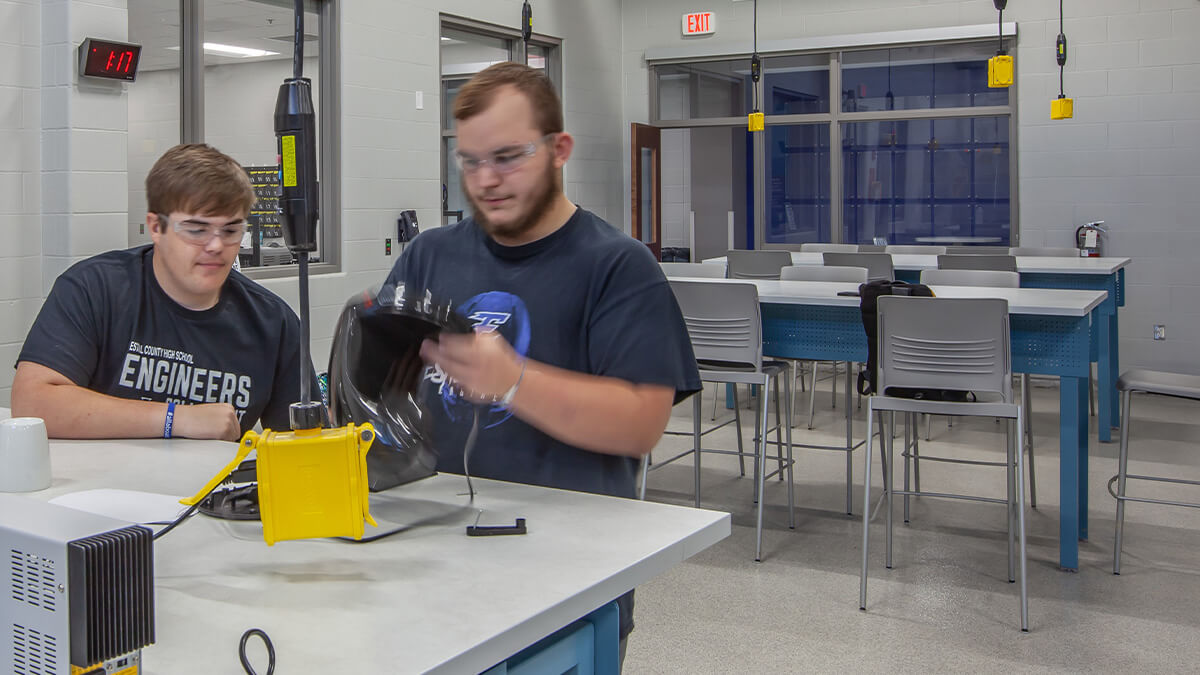- What's New
- Pricing & Purchasing
- Lead Times
- Literature & Samples
- Services & Warranties
- Careers
- Find a Rep
How to Support Students Who Don’t Plan to Attend a Four-Year College

High schools often take an all-or-nothing approach to post-graduation plans for their students, in that they either graduate and go on to attend a four-year college or they don’t.
Alternative paths forward—including community college, technical education and trade school—typically don’t get the same amount of attention.
This disconnect is doing our students a disservice and can have significant consequences on their future. To better bridge that gap, let's discuss how schools can support all their students by exploring the benefits of career and technical education.
The Gap in Student Resources
According to the U.S. Bureau of Labor Statistics, roughly 43% of 2021 high school graduates enrolled in four-year universities or colleges. If research from the National Center for Education Statistics is any indication, just 45% of that group will graduate with a degree in four years and 62% will graduate within six years.
This means that if you have a class of 100 high school students, 43 will attend a four-year university. Roughly 27 of those students will graduate after six years. That leaves 73 high school students that might find a better fit with a non-traditional post-graduation path.
The numbers say it plainly. Traditional, four-year colleges aren’t for every student right after graduating high school. In fact, they’re perhaps not the right fit for a vast majority of students.
Yet in many instances, schools don’t provide students with the same level of counseling or resources about trade and vocational schools as they do for four-year universities. According to a survey from the National Association for College Admission Counseling, just 27% of counselors felt moderately or very prepared to advise students about vocational programs.
The Opportunities in Career & Tech Ed
More than likely, students will not go out of their way to ask about non-traditional options because there’s often a stigma associated with trade school.
One poll of young adults found that nearly 73% of respondents believed traditional college provides a better future than trade school. Other respondents expressed that trade school students are perceived as less smart or less respected.
But the reality is that pursuing a two-year degree or vocational program offers considerable benefits:
- Competitive pay: For example, electricians earn an average of $65,000 per year; cosmetologists earn around $75,000 per year; HVAC technicians earn close to $80,000 per year; and UX designers and web developers can earn more than $100,000 per year.
- Shorter timeline to career: At technical schools and community colleges, it takes two years or less to receive an associate degree, compared to four years for a bachelor’s degree.
- Job security: The unemployment rate is 5% among 20 to 29-year-olds with an associate degree, compared to 13.1% among those with a bachelor's degree in the same age group.
- Less student loan debt: The average overall cost of earning a bachelor’s degree is four times the cost of a degree from a trade school – $132,000 compared to $33,000.
- Personal fulfillment: Research shows that job satisfaction impacts an individual's sense of happiness even more than income.
Benefits of Tech Ed

Competitive Pay
From electricians to cosmetologists and HVAC technicians to web developers, technical positions can earn more than $100,000 per year.

Shorter Timeline to Career
At tech schools or community colleges, it takes 2 years or less to receive an associate degree, compared to 4 years for a bachelor’s degree.


Less Student Loan Debt
The average cost of earning a bachelor’s degree is 4x the cost of a degree from a trade school (approx. $132,000 vs. $33,000).

Personal Fulfillment
Research shows that job satisfaction impacts an individual's sense of happiness even more than income.
The Actions that Support All Students
To better prepare students for non-traditional post-graduation pathways, high schools can implement a variety of strategies:
- Offer career and technical education classes: Incorporating classes on information technology, manufacturing, engineering, technology, user experience (UX) design, electrical training, woodshop or culinary arts can expose students to fields they haven’t considered for a career. In Texas, Wichita Falls Independent School District developed a Career Education Center for more than two dozen career paths, from welding to floral design.
- Hands-on high school spaces: Schools can support vocational classes with hands-on workshop spaces and digital technology labs. For instance, Portage High School in Indiana designed industrial-themed makerspaces with 3D printers and the like.
- Partner with local businesses: Partnerships between schools and local companies for internship programs or job shadowing days can give students a firsthand look at various professions and connect them with mentors. At KI, we work with the Northeast Wisconsin (NEW) Manufacturing Alliance to connect local middle school and high school students with manufacturing programming and apprenticeships.
- Show students real stories: If shadowing days or business partnerships are out of reach, organizations like mikeroweWORKS Foundation can put a spotlight on real people working in skilled trade professions and help reduce stigma.
- Counseling resources: Schools should also work to ensure their guidance counselors are equipped to advise students on trade and technical schools and community colleges. Another option is to invite nearby community colleges and vocational schools to a career fair day or to hold meetings with students on the high school campus.
The Outcome
Less than one-third of high school graduates will receive a degree from a four-year college or university within six years from graduation. By dedicating resources to career and technical education, we can set up all students for success, instead of just a fraction of them.
Subscribe
Stay up to date with the latest trends and more.





